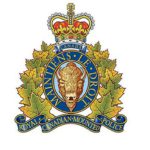DriveSmart BC: Distracted driving explained
It may be something that you are actually aware of or it may just be another buzz in the background of your life, but March is Distracted Driving Awareness Month in British Columbia. ICBC does the majority of the publicity, the police adjust their enforcement focus and drivers muddle along thinking that they are doing just fine until there is a knock on the side window and they’re issued a ticket imposing a fine of $368 and four penalty points.
You might be excused for thinking that distracted driving only applies to cell phone use. Unless you fully explore the links on ICBC’s Distracted Driving web page you might not discover that the rules do extend to other electronic devices as well.
“electronic device” means
(a) a hand-held cellular telephone or another hand-held electronic device that includes a telephone function,
(b) a hand-held electronic device that is capable of transmitting or receiving electronic mail or other text-based messages, or
(c) a prescribed class or type of electronic device;
Currently, the “prescribed class or type” mentioned in (c) above is found in the Use of Electronic Devices While Driving Regulation:
Prescribed electronic devices
3 (1) The following electronic devices are prescribed for the purposes of paragraph (c) of the definition of “electronic device” in section 214.1 of the Act:
(a) electronic devices that include a hands-free telephone function;
(b) global positioning systems;
(c) hand-held electronic devices, one of the purposes of which is to process or compute data;
(d) hand-held audio players;
(e) hand microphones;
(f) televisions.
(2) In subsection (1), “hand microphone” means a communication device consisting of a hand-held unit that
(a) is both receiver and microphone,
(b) is operated by a push and hold-to-talk function, and (c) allows for oral communication, but not for the transmission and receipt of oral communication at the same time.
You may also be unaware that using an electronic device could be something other than holding a conversation or sending a text.
“use”, in relation to an electronic device, means one or more of the following actions:
(a) holding the device in a position in which it may be used;
(b) operating one or more of the device’s functions;
(c) communicating orally by means of the device with another person or another device;
(d) taking another action that is set out in the regulations by means of, with or in relation to an electronic device.
The “other action” mentioned in (d) above is also found in the Use of Electronic Devices While Driving Regulation:
“Use” further defined
2 A person who watches the screen of an electronic device uses the device for the purposes of paragraph (d) of the definition of “use” in section 214.1 of the Act.
RoadSafetyBC offers a quick reference to explain what types of electronic devices a driver is permitted to use and how they must be used.
Two points of particular importance made in that quick reference are that drivers in the Graduated Licensing Program (GLP) must not use any type of electronic device at all and that when device use is permitted, the device must be properly secured.
Simply setting the GPS navigation on your cell phone and putting it in the cup holder will land you in trouble.
So, #EyesFwdBC!
Story URL:https://www.drivesmartbc.ca/distracted-driving/distracted-driving-awareness-month



























Comments